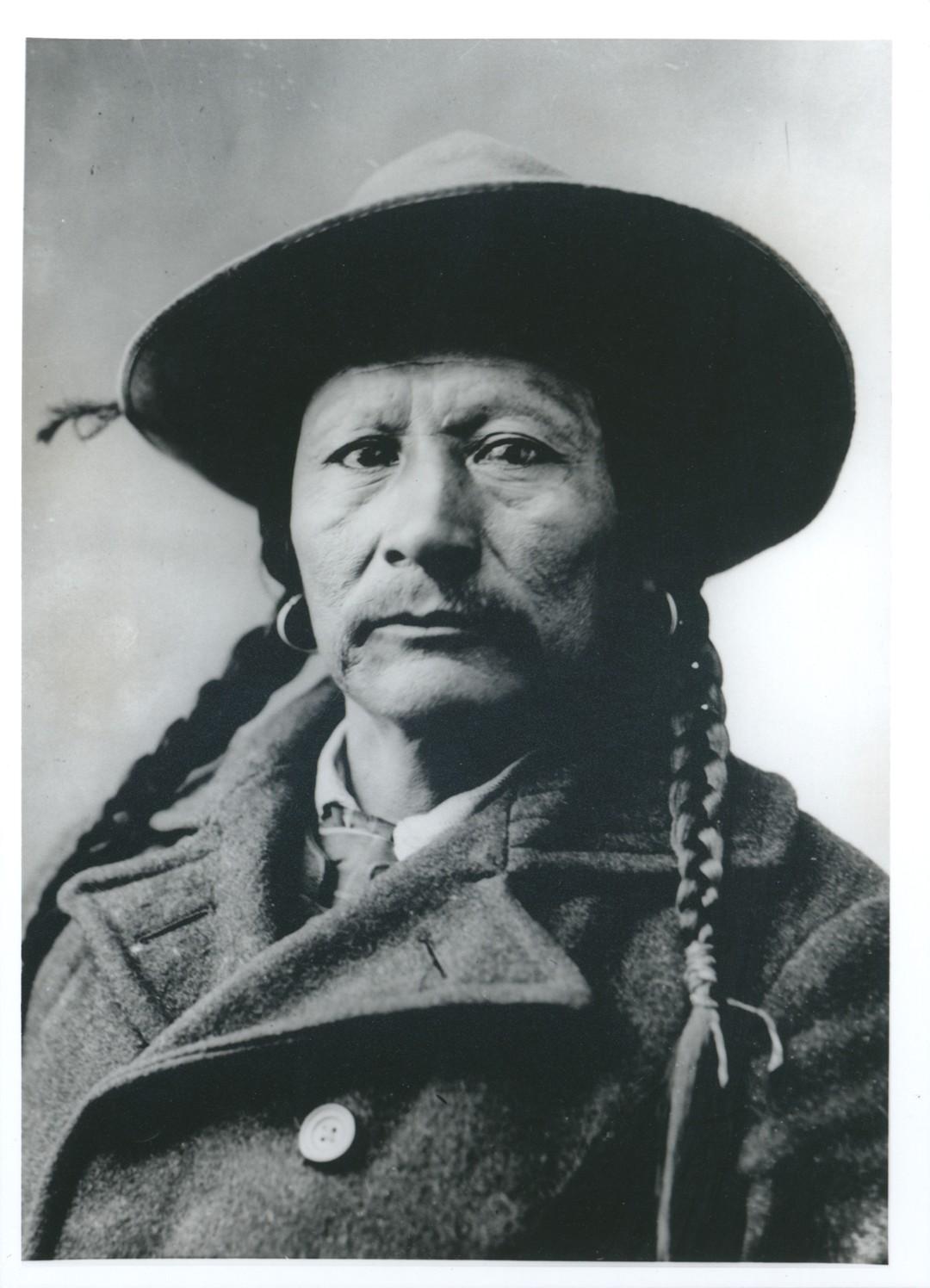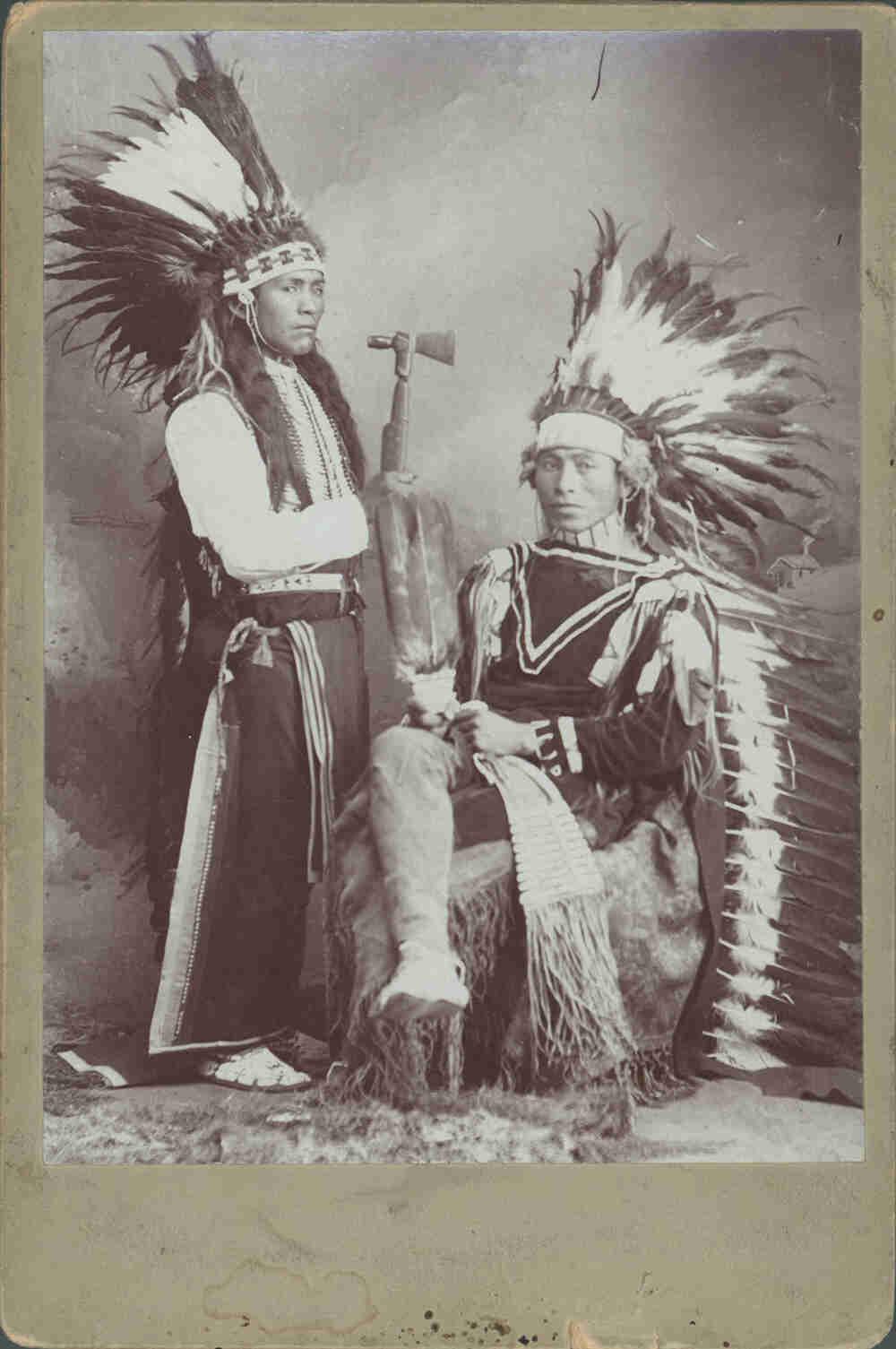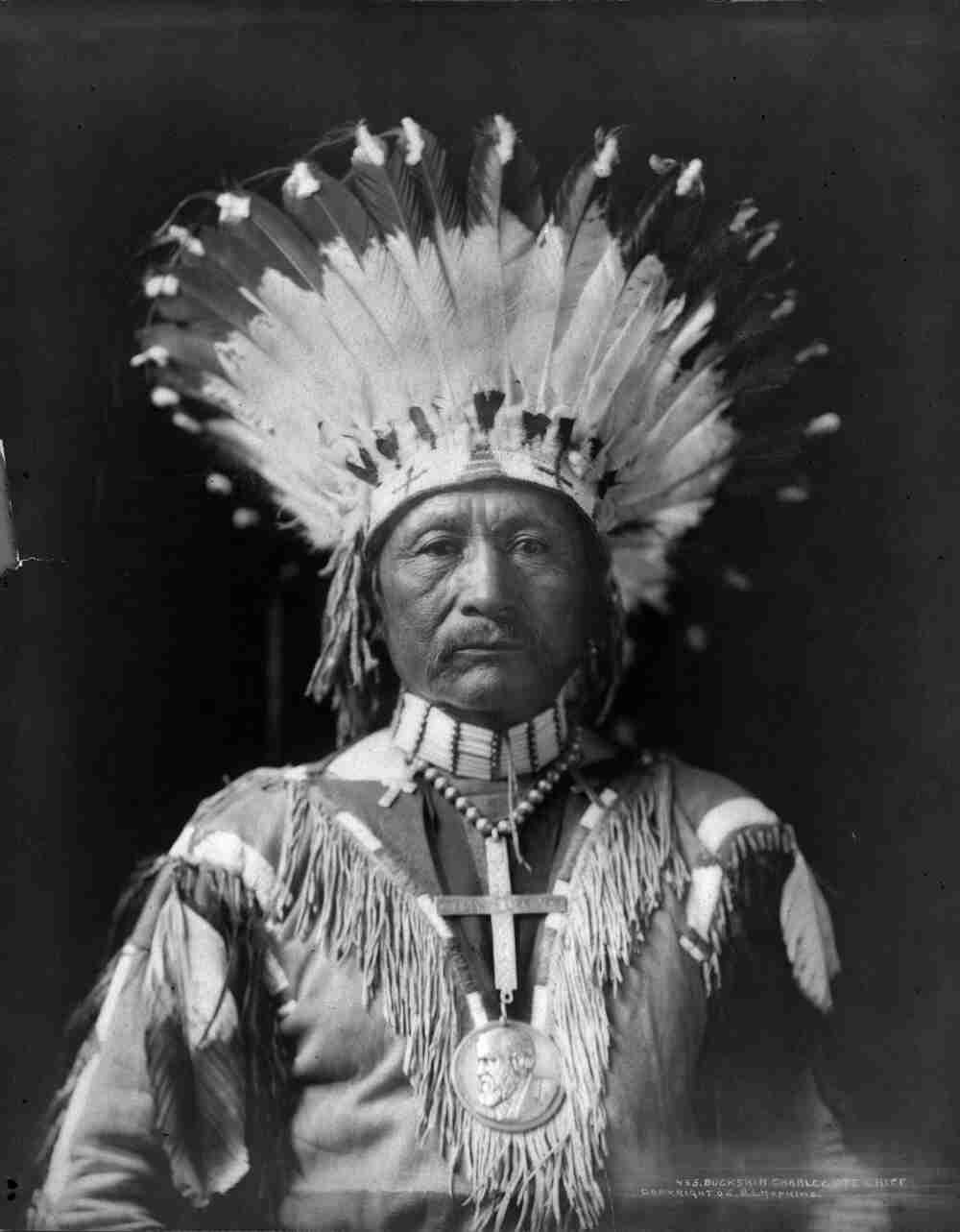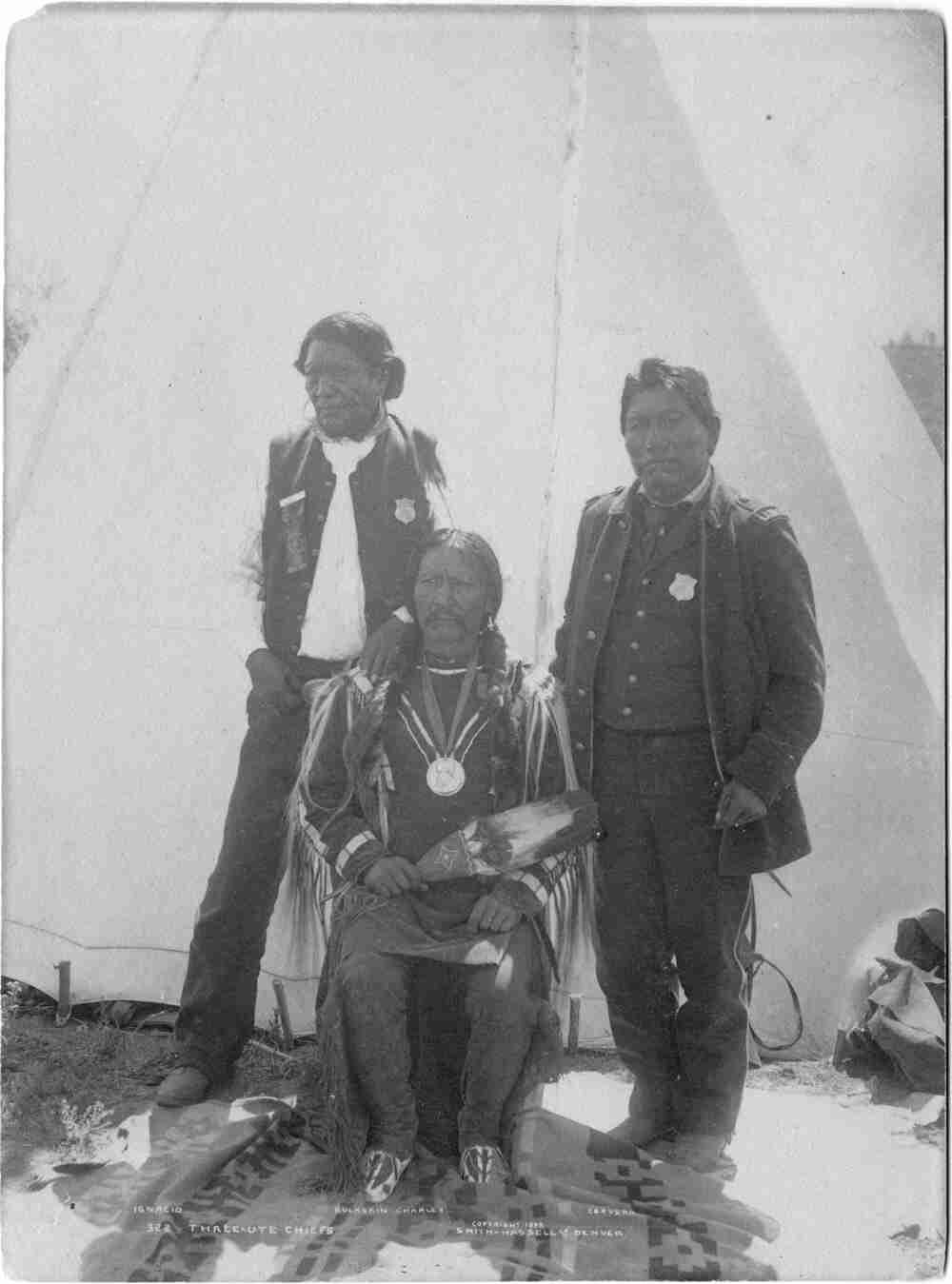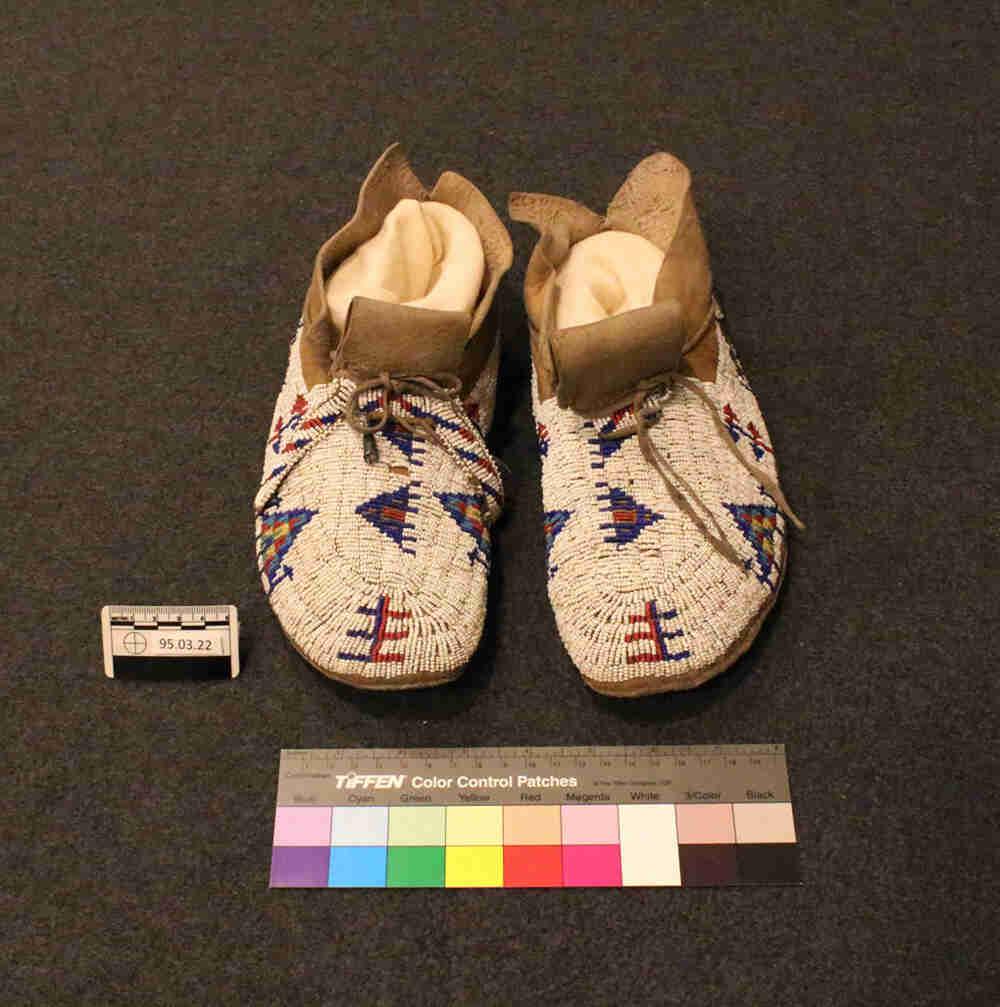Sapiah
Full Article
Sapiah (1840–1936) was the preeminent chief of the Muache band of the Southern Ute Tribe beginning around 1870. He was born to a Muache father and an Apache mother, perhaps in the vicinity of Tierra Amarilla, New Mexico. The origins of his English name, "Buckskin Charley," are obscure, and later in life he was also referred to as Charles Buck. He married Te-Wee, also known as To-Wee (Emma Naylor Buck). They had two sons: Julian and Antonio Buck.
Throughout his long tenure as chief of the Southern Ute Tribe, Sapiah traveled to Washington, DC, numerous times, meeting seven US presidents. He was presented the Rutherford Hayes Peace Medal by President Benjamin Harrison in 1890. Sapiah and five other Native leaders were in Theodore Roosevelt’s inaugural parade. In 1905 Sapiah and his youngest son, Antonio Buck, traveled to Washington to meet with President Roosevelt.
Leader
Even though the Nuche (Ute people) lived in disparate bands with their own leaders, throughout the late nineteenth century the US government recognized Ouray, leader of the Tabeguache band, as de facto head of all Ute people. In 1880 Ouray died of Bright's disease. His death came at a trying time for the Nuche in Colorado, especially the Northern bands, whom the US government forced out of Colorado after the Meeker Incident of 1879.
With Ouray gone, it fell to Sapiah and other Ute leaders to navigate a fraught relationship with the United States. Sapiah and other chiefs, including Severo of the Capote, shared Ouray's vision of coexistence with white Americans.
In 1886 Sapiah, Ignacio, and the Capote chief Tapuche went to Washington, DC, with C.F. Stollsteimer, Indian agent at Ignacio. Under pressure from white colonists and on the heels of violent events like the Beaver Creek Massacre, the three chiefs agreed to leave Colorado. A proposal was made for the removal of the Utes to southeastern Utah, but the agreement was never ratified, in part due to opposition from Utah politicians. Sapiah, Severo, and most of the Southern Utes kept their people on the reservation lands near Ignacio.
In 1894 the issue of removing Colorado's Ute people again came to a head, with Congress deciding that the Utes should stay in the state. In 1895 Congress passed the Hunter Act. This act imposed upon the Southern Ute Reservation the terms of the General Allotment Act of 1887, which authorized the president to survey and divide tribal land. By a vote of 153 to 148, the Southern Ute males agreed to accept the privatization of their land. The majority of the 153 were from the Muache and Capote bands, with most of the dissenting votes from the Weeminuche.
The government divided the reservation into two parts. The eastern portion was to be allocated into 80- and 160-acre parcels; the western part of the reservation was to remain unallotted, with the lands held in common by the Weeminuche. The Muache and Capote bands under Sapiah and Severo took the allotments and remained the Southern Ute Tribe under federal law, and the Weeminuche, led by Ignacio, moved to Navajo Springs, close to Towaoc, and were federally recognized as the Ute Mountain Ute Tribe. Chief Severo died in 1913, leaving Sapiah as the principal chief of the Southern Utes.
Leader on the Reservation
Sapiah was one of the most enterprising and farm-oriented leaders of the Utes. He settled into farming and ranching on his 160-acre allotment and became one of the tribe’s principal owners of cattle and sheep. In this regard, he was the government's ideal example of its vision for the Utes, a role model for his people. Sapiah’s economic success, however, was due in part to agency policies that resulted in preferential treatment of male leaders, including gratuity payments, salaries for reservation police, setup of pre-allotment farms and equipment, double allotments, and by 1911 allowing tribal leaders limited control over their own bank accounts. Sapiah was considered one of the favored Utes, although he continued with relative success after gratuities were removed in the early twentieth century.
Sapiah was also an advocate of youth education, as long as the children did not have to leave the reservation. Early on, Ute children were sent to Boarding Schools such as Old Fort Lewis at Hesperus, Colorado, the "Teller Institute" in Grand Junction, or further away to Santa Fe or Albuquerque, New Mexico. Many children suffered and died in these places, where they were exposed to unsanitary conditions and forced to abandon their language and traditions. Chief Ignacio is said to have lost three of his children while they attended boarding school in Albuquerque.
Sapiah and his wife, Emma Buck, were active participants in the peyote rites of the Native American Church. The Sun Dance religion took a firm hold on the Southern Ute Reservation with Sapiah as its leader. In contrast, Severo and Julian Buck, Charley’s oldest son, were converts to the Presbyterian Church. At the invitation of Julian Buck, Rev. A. J. Rodríguez set up a mission school near the Ignacio Agency.
Forty-five years after Ouray’s death, Sapiah took the lead to recover the dead chief’s remains and have them reburied in Ouray Memorial Cemetery along the Los Pinos River in Ignacio.
Sapiah died on May 8, 1936, at the age of ninety-six. He was preceded in death by his oldest son, Julian. On September 24, 1939, the Ute Chieftains Memorial Monument was dedicated in honor of four Ute Chiefs: Ouray, Sapiah, Severo, and Ignacio. After Sapiah’s death, his son Antonio Buck, Sr., the last hereditary chief of the Southern Utes, became the first elected chairman of the Southern Indian Tribe.


